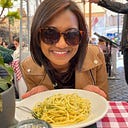I have often been asked this question: What is good design? While it may seem like there is one simple answer to this, I always struggle to respond. I can tell what design is not: It is not just about the aesthetics, it is not objective, neither is it very subjective, it is not what you perceive immediately after looking at something, and so on.
It’s safe to assume that good design is usable. But what about beautiful design? Design that looks good. Design that catches your attention. Design that attracts you with its simplicity, colors, texture or material. Can that be considered usable? Apparently, the answer is an astounding yes. This also corresponds to social psychology findings that people associate a person’s physical attractiveness with other personal attributes.
In their study, Masaaki Kurosu and Kaori Kashimura demonstrated the aesthetic-usability effect [1]. They concluded that “a user may be strongly affected by the aesthetic aspect of the interface even when they try to evaluate the interface in its functional aspects. In another study, researchers N. Tractinsky, A.S. Katz, D. Ikar addressed two objectives: 1. To test whether the initial correlation of perceived aesthetics and usability reflect more general tendencies to associate aesthetics with other system attributes; and 2. To explore what happens to users’ perceptions of aesthetics and usability after they use the system. This study strengthened the evidence of other studies that found strong correlations between users’ perception of an interface aesthetics and their perception of the usability of the entire system [2].
What does this mean when we are studying user behaviors? It’s quite puzzling. It is no news that attractive things are certainly preferred over less attractive ones, but why should they necessarily work better than the unattractive ones? Alice Isen’s study shows that when people are relaxed and happy, their thought processes expand, becoming more creative, more imaginative [3]. Donald A. Norman believes that this and other studies combined, suggest attractive things make people feel good, which in turn makes them think more creatively [4]. How does that make something easier to use? By making it easier for people to find solutions to the problems they encounter.
The aesthetic-usability effect is merely a phenomenon which has been supported by five or six studies. Since the effect has also been disproved by other researchers, there are no final conclusions drawn.
However, assuming that the effect has not been disproved, a few things to keep in mind for us user researchers:
- Acknowledge that your users are biased towards aesthetically pleasing things. Assume that are not considering the functions as much as they are looking at how good it looks.
- When you are conducting an A/B test, ensure that one element that you’re testing is not aesthetically more pleasing than the other, unless your goal is to test what users find more attractive.
- Keep in mind the cultural context of your study. For one group of people, a design might be very appealing while for the other group, the same design may be less appealing. It also depends on how much of an importance your users give to aesthetics.
- Think of this as not a challenge but as an opportunity to learn more about your users — it gives you more perspective.
[1] Kurosu, Masaaki & Kashimura, Kaori. (1995). Apparent usability vs. inherent usability experimental analysis on the determinants of the apparent usability. 2. 292–293.
[2] Tractinsky, N & Katz, Adi & Ikar, D. (2000). What is beautiful is usable. Interacting with Computers. 13. 127–145. 10.1016/S0953–5438(00)00031-X.
[3] Isen, A. M. (1993). Positive affect and decision making. In M. Lewis & J. M. Haviland (Eds.), Handbook of emotions (pp. 261–277). New York: Guilford.
[4] Norman, Donald. (2002). Emotion & Design: Attractive Things Work Better. Interactions Magazine. 9. 36–42. 10.1145/543434.543435.
